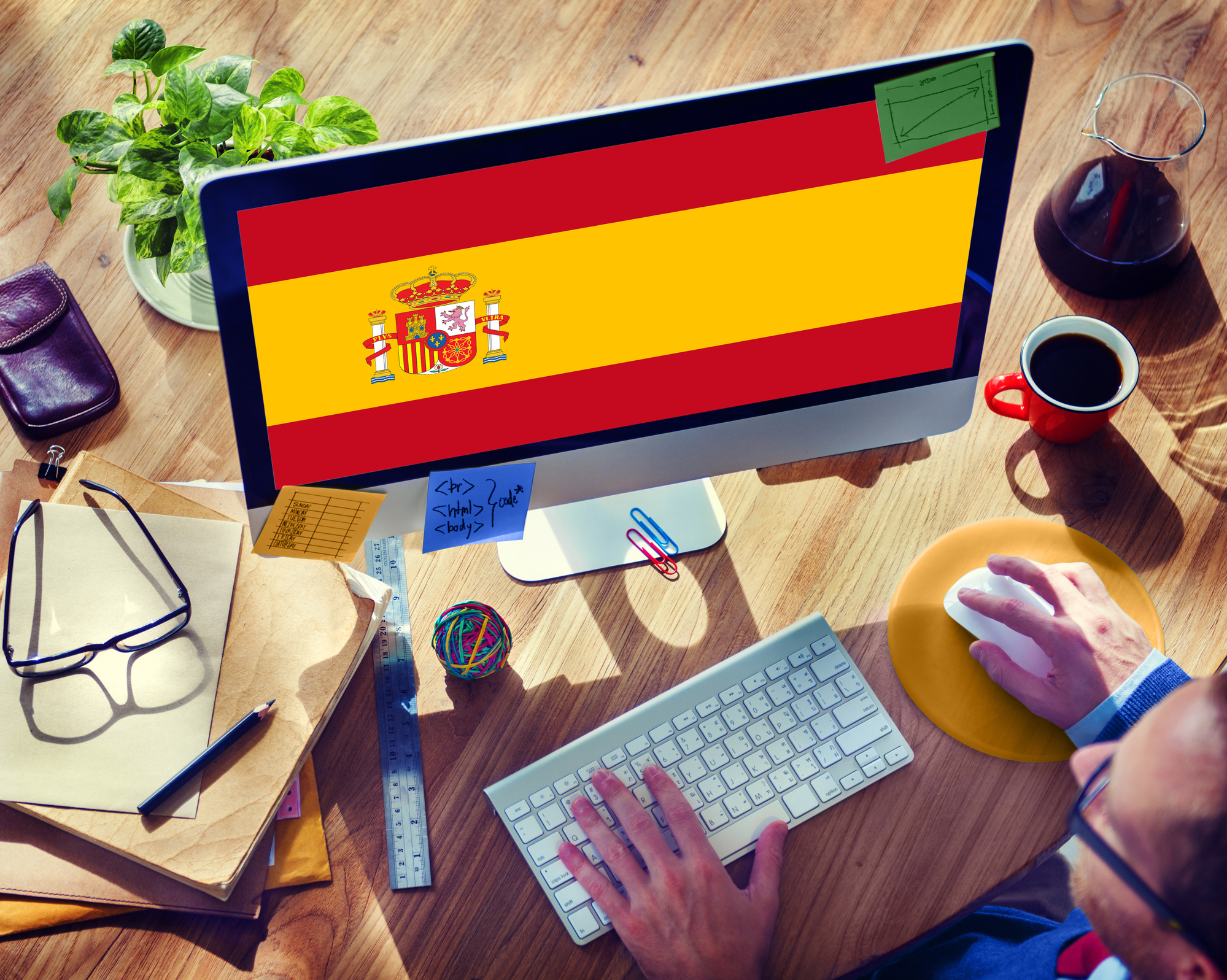Podcast: Download
Subscribe: Apple Podcast Google Podcasts Spotify
Welcome to the first-ever episode of Search Engine Nerds! We decided to narrow down our focus and talk with some of the smartest minds in SEO, PPC, and search trends to give you even more tools and insight to dominate in today’s competitive marketplace.
In this pilot episode of Search Engine Nerds, SEJ Executive Editor Kelsey Jones is joined by Zeph Snapp, Founder of Altura Interactive, a digital marketing agency providing Spanish SEO and website development for companies around the world, to talk about best practices for creating Spanish versions of websites. Zeph and Kelsey discuss what you need to do before getting started, whether translating content is better than creating new content in a different language, and what to keep in mind when it comes to international SEO.
I highly recommend listening to the entire podcast where Zeph shares stories of how things can go wrong in international SEO, and how things can go right and considerably boost your organic traffic.

Does a company have to be serving certain countries or have clients in specific countries before even considering a Spanish version of their site?
Zeph: There are usually two reasons people reach out to Spanish speakers and create Spanish versions of their websites. They want to reach a domestic market that speaks another language as their primary language, or they want to expand to international markets.
You want to make sure you’re shored up, that you’re feeling good about where you are on the English side or in your home language before you expand into the next one, unless your product is something very specific that’s going to be just for Spanish speakers.
The most important thing is to do your initial research first. You want to make sure there’s an audience for your product and for your service before you get in. That means doing extensive keyword research. It’s something you want to have someone specialized do for you because even if you know some of the keywords, you can get a general idea, but it’s going to be hard for you to understand the long-tail and the places besides Google where they might be searching for your types of products and services.
Kelsey: That makes sense. If you’re still having problems with the native language version of your site, then maybe fix those before embarking on a Spanish version.
Zeph: You definitely want to have all your ducks in a row and do a lot of planning before you get to that stage. The planning part of it is really important, too. You want to have a style guide, basically to understand the tone and the market you’re going after, the specific personas you’re trying to reach.
When getting a Spanish version of your site, does it need to have completely new content written in Spanish or is it just a translator that comes in and adapts what you already have?
Zeph: The first thing is you want to be working with a search and digital marketing agency to help you get this set up. There are some things that are going to be appropriate for just a straight translation. If you’re looking at product pages and pricing pages and things like that, those are going to be a little bit easier to just do a direct translation of. If you’re looking at blog posts, video, even your full-blown service pages and things like that, you want to use a process called transcreation.
Translation is something that’s direct, right? Most translators are paid by the word. They want to get this done as quickly as possible, so they’re going to give you a literal translation of what you have in English. The problem with that is it doesn’t generally convey the mood and brand you have, and a lot of times it can actually be inaccurate. People are going to use the wrong word because they’re just doing a literal translation.
When you transcreate, you take the spirit of the thing and you take the understanding of that, and you create something based on it that’s new. You don’t lose what you have in English or in your language of origin. You keep that as you come into new markets and new countries. The best way for you to improve your conversion rate is to have content that speaks directly to these people who speak this other language.
Kelsey: I’ve seen bad examples out there of when a company tries to go into another country and they don’t put that work into it ahead of time then their message gets jumbled. I think bad translation can kill a website because it makes it seem like they don’t care enough or they don’t know enough about their customer.
Zeph: Precisely. In those situations, you’re better off not doing it at all if it’s going to be a poor version of it. If you do a poor translation, they’re going to see it and say, “These guys don’t have a clue.”
What do you do when the client’s industry is really technical and you need specialized knowledge of making sure the wording is correct?

Zeph: The first thing is you have to do a lot of research. That’s why we create the style guide beforehand. Part of the style guide is when we’re using terminology. You would use this term but not this term, and creating those kinds of lists where we can give the client feedback and say, “Well, these are the terms that we found. What works best for you?” Usually, that give and take results in a creation of a style guide that’s precise.
What’s most important is maintaining your brand and maintaining the type of voice that you want people to get from your content. If you don’t have that basis of a style guide and understanding, then it’s going to be very difficult to accomplish.
Do best practices for SEO change for Spanish websites or other language versions?
Zeph: One of the great things about working in other languages is you have opportunities that don’t exist in English. For example, we noticed in the last few months a significant uptake in seeing the answer boxes in the SERPs. That’s something that didn’t exist before. It’s still fairly limited in Spanish as well. What ends up happening is, since the SERP is a little bit further behind, if you’re doing things that are more up to date, like structured data and setting yourself up for answer boxes, you’re more likely to succeed.
As far as the best practices themselves, they don’t change too much. But you can get away with a lot more in other languages than you can in English. The other question that people ask a lot is, “Do I need a ccTLD? Do I need to do a separate sub-folder or sub-domain? What’s the best strategy?” Of course, the answer is, “It depends. It depends on your situation.” Aleyda Solis wrote a post for Moz that’s basically like a decision tree to help you figure out how you ought to play that. With hreflang, there are other great resources. Many companies have now built hreflang validators and creators, including us. You can go in and make sure you’re getting the language country markup correct so it ensures you’re showing up correctly.
I think the situation where it’s most important to have ccTLDs is if you’re going to have physical locations in these specific countries. In those situations, a ccTLD is necessary, but there are situations, especially when you’re proving a concept and you’re testing something out or if you have a virtual product, where you can get by with a sub-folder or sub-domain. That way, you don’t have to worry about all the ccTLDs and controlling those separately. That being said, if you’re a big enough company and you can afford it or if it’s a priority for you, you should definitely go out and buy as many of your own ccTLDs as you can so that somebody else doesn’t take them from you.
Is there a penalty from Google if you don’t have hreflang on your site?
Zeph: The reason hreflang came about is it was basically a way for people to avoid a duplicate content penalty. Let’s say you’re Domino’s. You service every country in Latin America. Well, your home pages and your sub-pages are all going to look alike, right? They’re all going to have very, very similar texts. How is Google going to know that this is not duplicate content? That in fact, this content is for specific countries? That’s why they came up with a hreflang markup. It’s to define for them which page is to be served in which occurrence.
So if you created sub-pages that were in English for every country in the world and you didn’t put a hreflang for it, you’re probably going to get penalized for duplicate content because you’re going to have the same page 167 times or something like that. That’s the kind of penalty you could see because you didn’t use the specific markup. What hreflang is supposed to do is show the correct page with the correct information for that specific instance.
The other part that’s kind of interesting is there are instances where you don’t need it. If your content is significantly different in another language and you have it on a separate ccTLD or even in a sub-domain, we’ve seen instances where people are ranking perfectly for their terms without having hreflang marked up. It’s always good to cover your bases, but if your content is different enough, it’s not completely necessary.
To listen to this Search Engine Nerds Podcast with Zeph Snapp:
- Listen to the full episode at the top of this post
- Subscribe via iTunes
- Sign up on IFTTT to receive an email whenever the Search Engine Nerds podcast RSS feed has a new episode
- Listen on Stitcher, Overcast, or Pocket Casts
Think you have what it takes to be a Search Engine Nerd? If so, message Kelsey Jones on Twitter, or email her at kelsey [at] searchenginejournal.com.
Image Credits
Featured Image: Paulo Bobita
In-post Image #1: Rawpixel/DepositPhotos
In-post Image #2: Rawpixel/DepositPhotos

![What Are The Best Practices in Creating Spanish Versions of Websites? [PODCAST]](https://www.searchenginejournal.com/wp-content/uploads/2017/02/Banner.jpg)



